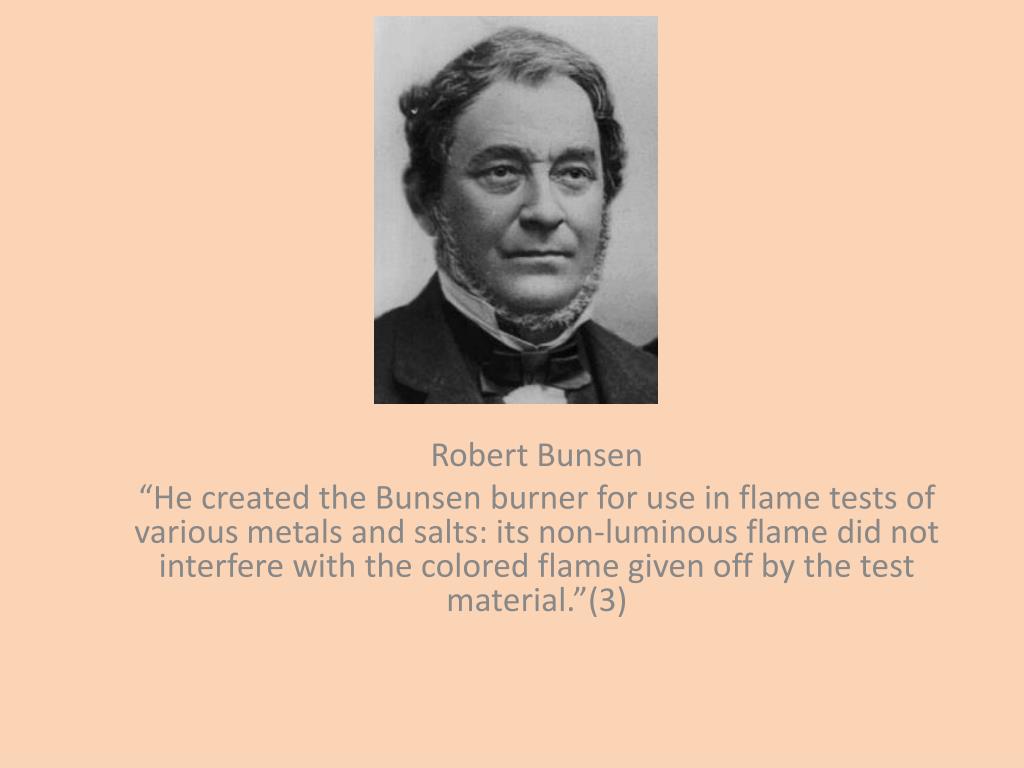One of the greatest experimental chemists of the 19th century: Who is Robert Wilhelm Bunsen?
Bunsen, who had studied the organic compounds of arsenic in his early studies, lost his right eye in an explosion of cacodyl cyanide during an experiment in 1837. Moreover, during his research, which lasted about six years, he nearly died from arsenic poisoning.

(1811-1899) German chemistry and physics scholar. He was one of the pioneers of chemical spectrum analysis and one of the greatest experimental chemists of the 19th century. Born 31 March 1811 in Göttingen, died 16 August 1899 in Heidelberg. He received his doctorate in physics-chemistry in 1830 with his thesis on hygrometers from the University of Göttingen, where he studied physics, chemistry, mineralogy, and mathematics.
After studying the laboratories in Paris, Berlin, and Vienna for three years and meeting famous chemists, he started to work as a lecturer at the University of Göttingen in 1835. Bunsen, who taught at the Polytechnic School in Kassel between 1836 and 1838 and was a professor of chemistry at the University of Marburg from 1838 to 1857, met Kirchhoff, with whom he would later work, at the University of Breslau, where he went to lecture for one semester that year. In 1852 he assumed the post of professor of chemistry vacated by Gmelin at Heidelberg University and remained in that position until his retirement in 1889. He worked hard to train valuable chemists such as Adolph von Baeyer, Adolph Kolbe, Edward Frankland, and Julius Meyer in the experimental chemistry laboratory he established at this university. He never married and devoted all his time to laboratory studies and students.
Bunsen, who was elected foreign member of the Royal Society in London in 1858 and the French Academy of Sciences in 1882, received the Copley Medal of the Royal Society in 1860 and the first Davy medal with Kirchhoff in 1877.
Bunsen, who had studied the organic compounds of arsenic in his early studies, lost his right eye in an explosion of cacodyl cyanide during an experiment in 1837. Moreover, during his research, which lasted about six years, he nearly died from arsenic poisoning. In the end, he succeeded in describing the structure of cacodyl in the formula C4 H12 As2, as well as showing that hydrated iron oxide could be used as an antidote to arsenic poisoning. However, after concluding this work, he did not work in the field of organic chemistry again.
On the other hand, Bunsen, one of the biggest names in experimental studies in the field of inorganic chemistry, mostly designed the tools and methods necessary for chemical analysis himself. Bunsen, who developed a zinc-carbon battery instead of the platinum battery used at that time, was assigned to develop the cast iron production method in 1845, and as a result of these studies, he started intensive research on gas analysis.
Bunsen also laid the foundations of photochemistry with his collaborative work with his student Roscoe. In these studies, he chose the reaction of hydrogen and chlorine gases to combine with the effect of light to examine the qualitative effects of light on chemical reactions and showed that the amount of hydrochloric acid formed as a result of the reaction depends on the intensity of the light acting as a catalyst and the duration of the radiation. Nevertheless, his most important contribution to chemistry was his spectral analysis studies with Kirchhoff, two researchers developed the first spectroscope (spectroscope) by combining a Bunsen burner and a device designed by Fraunhofer, and achieved the quantitative analysis of elements with this method. In this method, a mixture of more than one element is evaporated by the flame of a Bunsen burner, and the color spectrum of each element is examined by passing the unique light of each element through a prism. The presence or absence of certain colors in the spectrum is a reliable analysis method since it shows which elements are present in the sample, and Bunsen defined the presence of elements such as rubidium and cesium with this method.
-------------------------------------------
https://www.famousscientists.org/robert-bunsen/
